Video content plays a crucial role in enhancing learning experiences, as its quality directly impacts engagement, comprehension, and retention. By utilizing effective formats such as interactive videos and short-form content, educators can create immersive learning environments that cater to diverse audiences and learning styles.
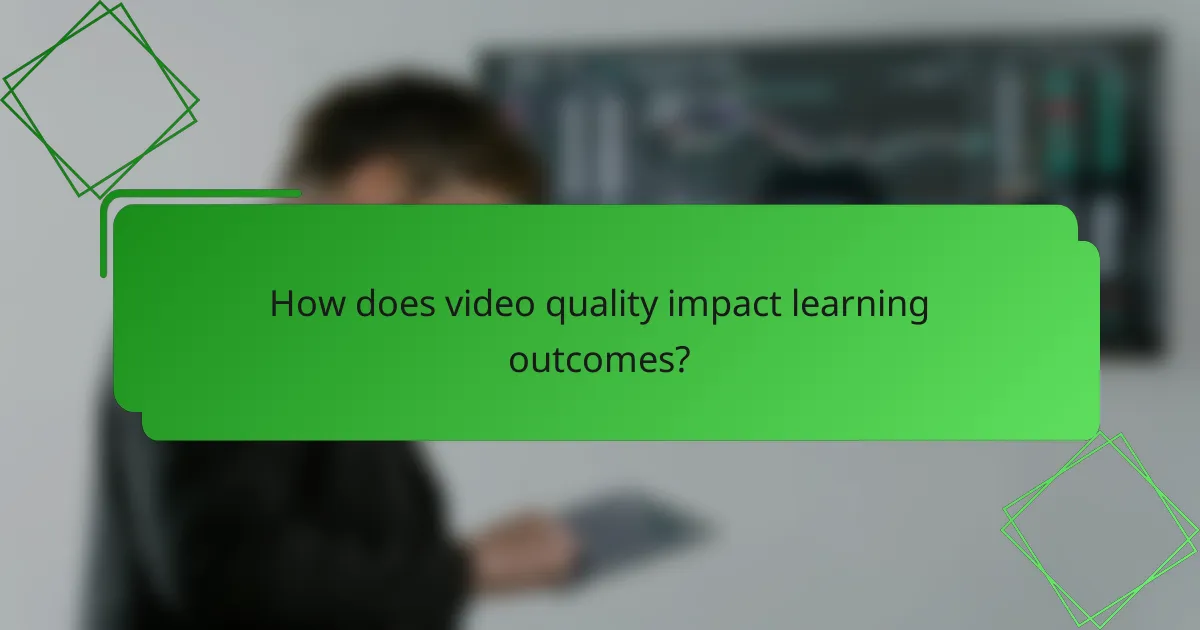
How does video quality impact learning outcomes?
Video quality significantly influences learning outcomes by affecting engagement, comprehension, and retention. Higher quality visuals and audio create a more immersive experience, which can lead to better understanding and retention of information.
High-resolution video enhances engagement
High-resolution video captures attention more effectively than lower quality options. When learners can see details clearly, they are more likely to stay focused and engaged with the content. For instance, educational videos in 1080p or higher resolution can make complex diagrams and visuals easier to understand.
Consider using high-resolution formats for instructional videos, especially in subjects that rely heavily on visual information, such as science or art. This can lead to a noticeable increase in viewer retention rates and overall satisfaction with the learning experience.
Clear audio improves comprehension
Clear audio is crucial for effective communication in video content. When learners can hear instructions and explanations without distortion or background noise, they are more likely to grasp the material. Poor audio quality can lead to misunderstandings and frustration, which detracts from the learning experience.
To ensure clear audio, invest in good microphones and consider using noise-canceling technology during recording. Aim for audio levels that are consistent and free from interruptions to maximize comprehension and retention.
Consistent lighting reduces distractions
Consistent lighting plays a vital role in maintaining viewer focus during video lessons. Poor lighting can create shadows or glare, making it difficult for learners to concentrate on the content. Properly lit videos help convey information clearly and keep distractions to a minimum.
When producing video content, use soft, diffused lighting to create an even illumination. Avoid harsh contrasts and ensure that the subject is well-lit throughout the recording. This attention to detail can significantly enhance the overall learning experience.
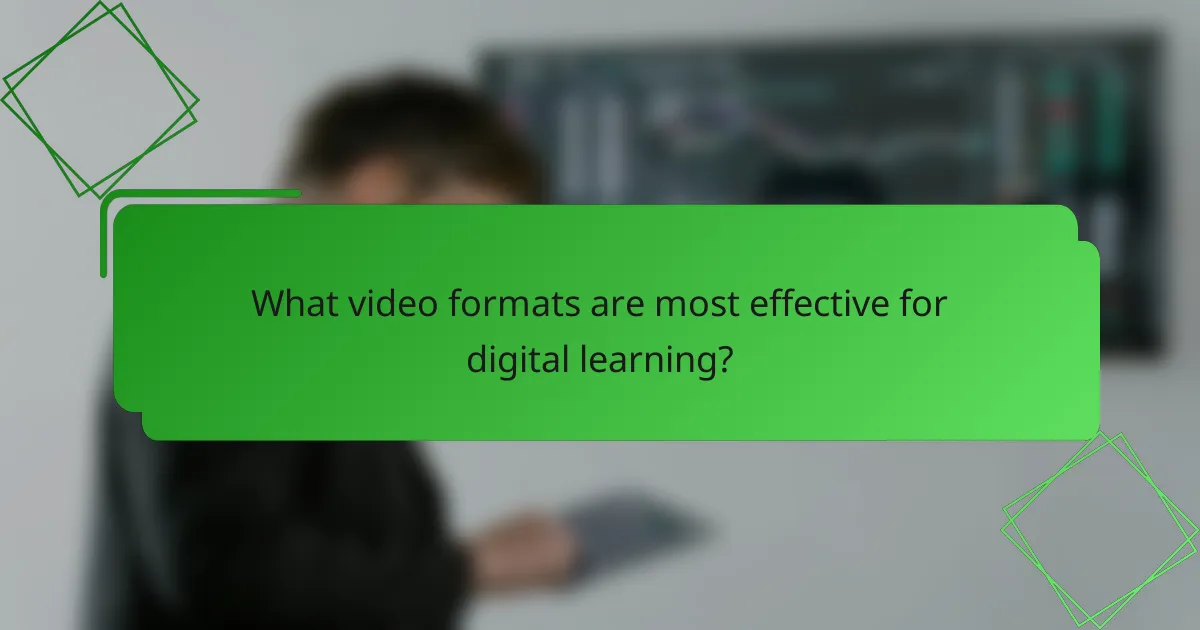
What video formats are most effective for digital learning?
Effective video formats for digital learning include interactive videos, short-form content, and live streaming. Each format serves unique purposes and can significantly enhance engagement and knowledge retention among learners.
Interactive video formats boost retention
Interactive video formats engage learners by allowing them to make choices that influence the content. This active participation helps reinforce learning, as users are more likely to remember information when they interact with it. For instance, quizzes embedded within videos can test knowledge in real-time, enhancing retention rates.
Consider using tools that enable branching scenarios where learners can explore different paths based on their decisions. This method not only keeps viewers engaged but also caters to various learning styles, making the content more accessible.
Short-form videos increase viewer completion rates
Short-form videos, typically lasting a few minutes, are effective in maintaining viewer attention and increasing completion rates. Research suggests that content under five minutes is often more digestible, making it easier for learners to absorb key concepts without feeling overwhelmed.
To maximize impact, focus on delivering concise, targeted information. Use clear visuals and straightforward language to convey your message quickly. This format is particularly useful for tutorials or quick tips where learners seek immediate answers.
Live streaming fosters real-time interaction
Live streaming allows for real-time interaction between instructors and learners, creating a dynamic learning environment. This format encourages questions and discussions, making the experience more engaging and personalized. Participants can receive immediate feedback, which enhances understanding and retention.
When planning a live session, ensure you have a clear agenda and encourage audience participation through polls or Q&A segments. This interaction not only keeps viewers engaged but also builds a sense of community among participants, which can enhance the overall learning experience.
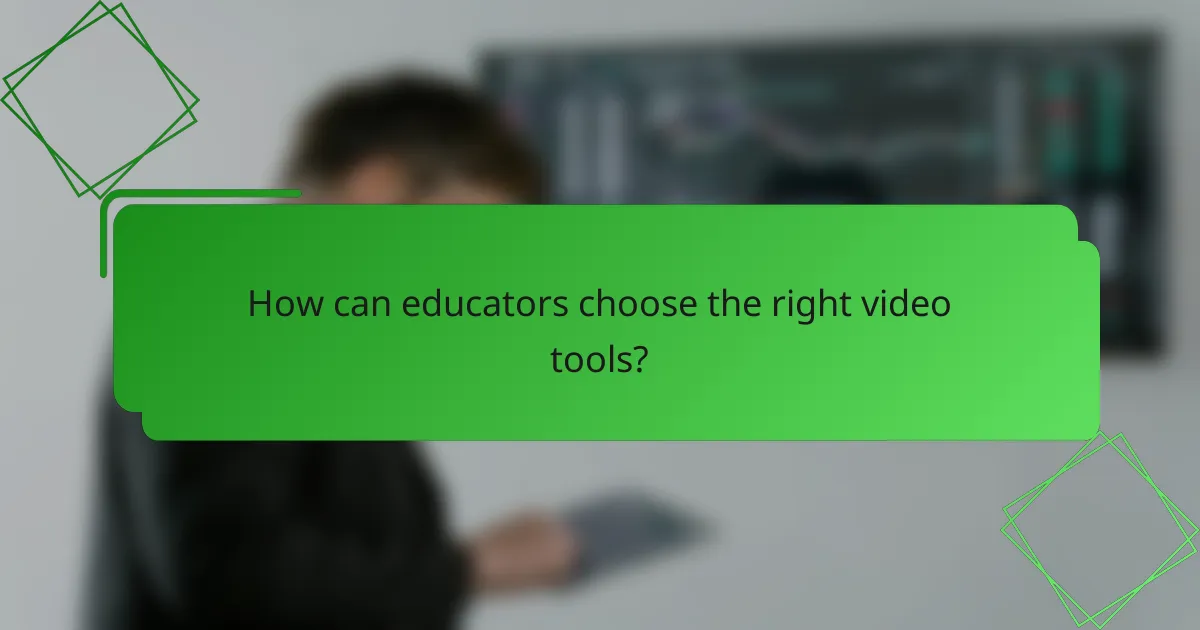
How can educators choose the right video tools?
Educators can choose the right video tools by assessing their specific needs, the intended audience, and the features offered by various platforms. Key factors include ease of use, compatibility with existing systems, and the ability to enhance learning outcomes through effective video content.
Criteria for selecting video platforms
When selecting video platforms, consider factors such as user interface, accessibility, and integration capabilities with learning management systems (LMS). Look for platforms that support various video formats and allow for easy sharing and collaboration.
Additionally, evaluate the platform’s analytics features, which can provide insights into viewer engagement and learning impact. Cost is another crucial factor; many platforms offer tiered pricing, so assess your budget against the features you need.
Comparison of popular video editing tools
Popular video editing tools vary in functionality and user experience. For instance, tools like Adobe Premiere Pro and Final Cut Pro are robust but may require a steeper learning curve, making them better suited for advanced users. In contrast, platforms like WeVideo and Camtasia offer user-friendly interfaces and are ideal for educators looking for quick edits without extensive training.
Consider the specific features you need, such as screen recording, text overlays, or special effects. Many tools offer free trials, allowing educators to test their capabilities before committing financially. Always check for compatibility with your operating system and any additional hardware requirements.

What are the best practices for creating educational videos?
To create effective educational videos, focus on clear messaging, engaging visuals, and interactive elements. These practices enhance viewer understanding and retention, making learning more impactful.
Storyboarding enhances content flow
Storyboarding is a crucial step in video production that helps organize content logically. It allows creators to visualize the sequence of scenes, ensuring a coherent narrative that guides viewers through the material.
When storyboarding, consider breaking down the video into segments, each with a clear purpose. This approach can help maintain audience engagement and clarify complex topics by presenting them in manageable parts.
Using subtitles improves accessibility
Incorporating subtitles in educational videos significantly enhances accessibility for diverse audiences. Subtitles allow viewers who are deaf or hard of hearing to engage with the content, while also benefiting non-native speakers by providing text support.
To maximize effectiveness, ensure that subtitles are synchronized with the audio and are easy to read. Use a clear font and contrasting colors to improve visibility, and consider offering subtitles in multiple languages to reach a broader audience.
Incorporating quizzes reinforces learning
Including quizzes in educational videos can effectively reinforce learning and assess viewer comprehension. Quizzes encourage active participation, prompting learners to reflect on the material and solidify their understanding.
Consider using a mix of question types, such as multiple-choice and true/false, to keep quizzes engaging. Aim for short quizzes that can be completed in a few minutes, allowing viewers to test their knowledge without feeling overwhelmed.
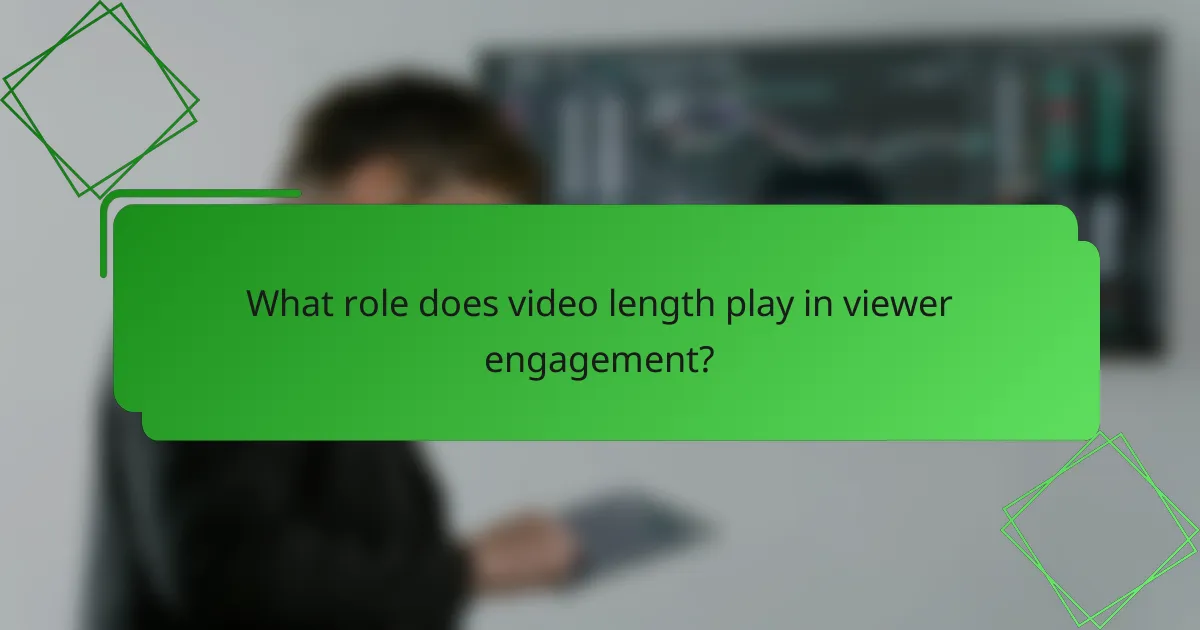
What role does video length play in viewer engagement?
Video length significantly influences viewer engagement, with optimal durations often leading to higher retention rates. Shorter videos tend to maintain attention better, while longer formats can provide more in-depth information when structured effectively.
Optimal video length for online courses
The ideal video length for online courses generally falls between 6 to 15 minutes. This range allows instructors to deliver focused content without overwhelming learners. Breaking longer content into shorter segments can enhance understanding and retention.
For example, a 10-minute video can cover a single concept thoroughly, while a series of 5-minute videos can address multiple related topics. This modular approach caters to different learning paces and preferences.
Impact of video length on viewer retention
Viewer retention tends to decline after the first few minutes, making it crucial to keep videos concise. Studies suggest that videos under 10 minutes often retain a higher percentage of viewers compared to those exceeding this length.
To maximize retention, consider starting with engaging hooks and summarizing key points throughout the video. Avoid lengthy introductions and get to the core content quickly to maintain interest.
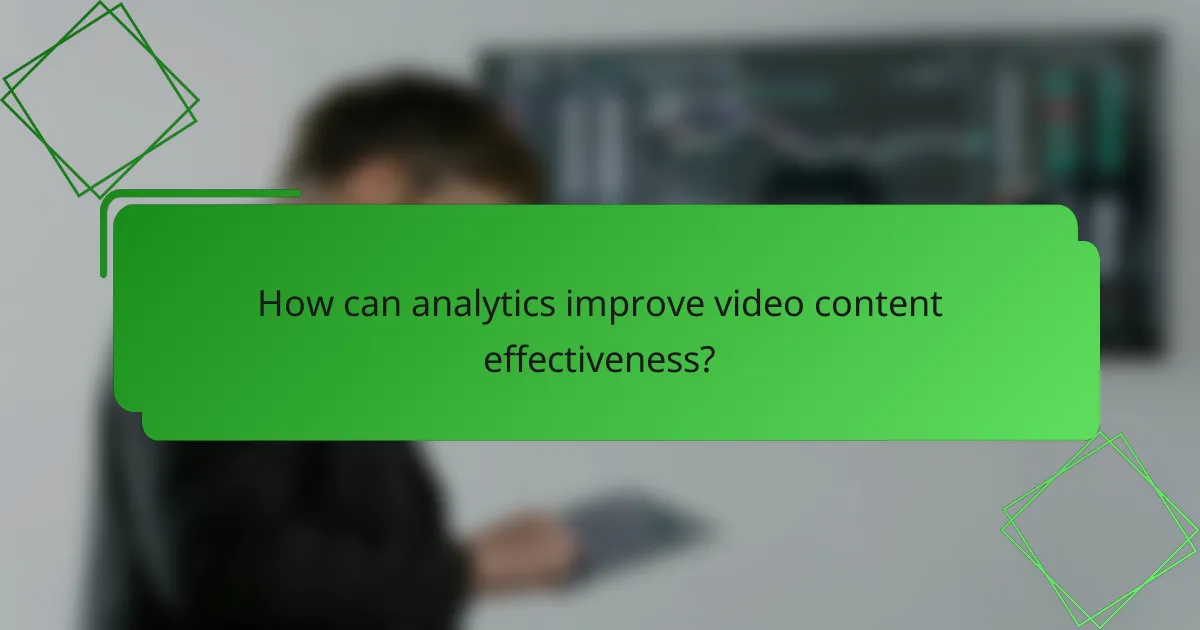
How can analytics improve video content effectiveness?
Analytics can significantly enhance the effectiveness of video content by providing insights into viewer behavior and engagement. By tracking metrics such as watch time, drop-off rates, and audience demographics, creators can make informed decisions to optimize their videos for better performance.
Understanding viewer engagement metrics
Viewer engagement metrics include watch time, likes, shares, and comments. These indicators help assess how well the content resonates with the audience. For example, a high watch time suggests that viewers find the video compelling, while a low drop-off rate indicates that the content maintains interest throughout its duration.
Using data to refine content strategy
Data analysis allows content creators to identify trends and preferences among their audience. By examining which topics generate the most engagement, creators can tailor future videos to align with viewer interests. For instance, if analytics show that tutorials on specific subjects receive more views, focusing on those areas can enhance overall effectiveness.
Implementing A/B testing for video formats
A/B testing involves comparing two versions of a video to determine which performs better. This method can be applied to various elements, such as video length, thumbnail design, or call-to-action placement. By systematically testing these variables, creators can optimize their content based on real viewer responses.
Monitoring performance over time
Regularly monitoring video performance helps identify long-term trends and shifts in audience preferences. By analyzing data over weeks or months, creators can adjust their strategies to stay relevant. For example, if a particular style or format becomes less popular, adapting to new trends can maintain viewer interest and engagement.


